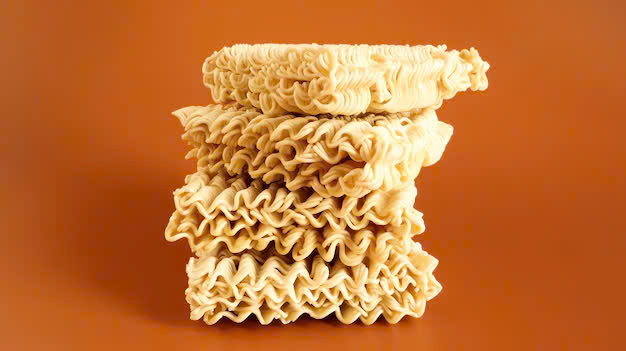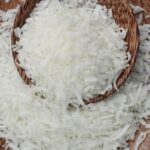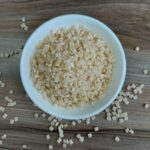CASHEW NUT SHELL OIL
Modified tapioca starch has revolutionized the food industry, especially in the production of noodles. By enhancing the texture, improving cooking stability, and offering a variety of functional benefits, it has become an essential ingredient for manufacturers looking to produce high-quality noodles. In this blog, we will explore seven key functions of modified tapioca starch in noodles production, shedding light on why it’s so widely used and how it continues to drive innovation in the industry.


Table of Contents
Toggle1. Enhancing Texture and Chewiness
One of the most notable characteristics of noodles is their texture. Consumers often prefer noodles with a perfect balance of chewiness and firmness, and modified tapioca starch plays a critical role in achieving this. When used in the production process, the starch enhances the elasticity and chewiness of the noodles, giving them a more desirable mouthfeel. This is particularly important in instant noodles, where the product needs to maintain its structure and texture after cooking or rehydration. The use of modified tapioca starch allows manufacturers to consistently produce noodles with an ideal, satisfying bite.
2. Improving Water Absorption and Retention
Water absorption and retention are vital aspects of noodle production. During the cooking process, noodles must absorb the right amount of water to achieve the desired consistency. Modified tapioca starch has excellent water-binding properties, which help noodles absorb and retain moisture more effectively. This ensures that the noodles do not become too soft or too firm after cooking. Additionally, it helps prevent the noodles from becoming overly dry during storage, maintaining their quality for a longer shelf life.
3. Enhancing Cooking Stability
Consumers often expect noodles to maintain their integrity after boiling or reheating, especially with instant or quick-cooking varieties. Modified tapioca starch enhances the cooking stability of noodles, ensuring that they do not break apart, become too sticky, or lose their structure when exposed to hot water. This improved stability is particularly important for noodles that are pre-cooked or par-cooked, such as those used in instant noodle cups or packs. The ability of the starch to withstand high temperatures ensures that the final product retains its quality throughout the cooking process.
4. Reducing Stickiness
One of the common issues faced by noodle manufacturers is the stickiness that can occur during production or after cooking. Sticky noodles can be difficult to package and unpleasant for consumers to eat. Modified tapioca starch helps reduce the stickiness of the noodles by creating a smoother surface that minimizes clumping. This makes the production process more efficient and ensures a better end-user experience, as the noodles remain easy to handle and separate.
5. Extending Shelf Life
Noodles, especially instant noodles, need to have a long shelf life without losing their quality. Modified tapioca starch plays a vital role in extending the shelf life of noodles by stabilizing their structure and preventing moisture loss or spoilage. The starch’s water-binding capacity ensures that the noodles retain their moisture content during storage, while its ability to resist microbial growth helps prevent the noodles from deteriorating over time. As a result, manufacturers can produce noodles that stay fresh and appealing for extended periods, meeting consumer demand for convenience and durability.
6. Gluten-Free Solution
With the growing demand for gluten-free products, modified tapioca starch provides an excellent alternative for producing gluten-free noodles. Tapioca starch is naturally gluten-free, making it a suitable ingredient for those who are sensitive to gluten or have celiac disease. When modified, the starch can mimic the elasticity and texture typically provided by gluten in traditional wheat-based noodles. This allows manufacturers to create high-quality gluten-free noodles without compromising on texture, taste, or performance, catering to a broader range of dietary preferences.
7. Cost-Effective Ingredient
In addition to its functional benefits, modified tapioca starch is a cost-effective ingredient for noodle manufacturers. Tapioca starch is derived from the cassava plant, which is abundantly grown in regions like Southeast Asia and South America. This makes it an affordable and sustainable source of starch for industrial use. By incorporating modified tapioca starch into their production processes, manufacturers can reduce costs while still producing noodles with excellent texture, stability, and shelf life. Its versatility and affordability make it an attractive option for companies looking to optimize production efficiency without compromising on product quality.

Conclusion
Modified tapioca starch is a game-changing ingredient in the production of noodles, offering numerous functional benefits that improve the texture, cooking stability, and shelf life of the product. Its ability to enhance chewiness, reduce stickiness, and act as a gluten-free solution makes it indispensable in today’s noodle manufacturing industry. Moreover, its cost-effectiveness adds value for manufacturers, helping them meet consumer demand for high-quality, affordable, and convenient noodle products. As consumer preferences continue to evolve, modified tapioca starch will remain at the forefront of innovation in noodle production, driving the industry forward.
By understanding and leveraging the essential functions of modified tapioca starch, noodle manufacturers can continue to create superior products that satisfy a wide range of consumer needs and preferences.












